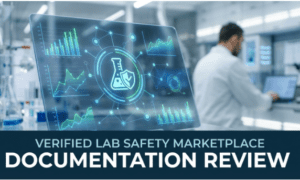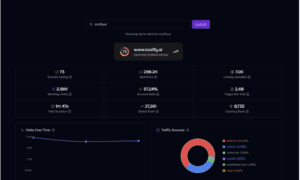Let’s face it—digital transformation is no longer a buzzword tossed around in tech circles. It’s real, it’s urgent, and it’s reshaping how companies operate across every industry. From legacy banks racing to update their mobile platforms to traditional retailers diving into AI-driven customer insights, the world is changing fast. And in the middle of this whirlwind of change, one thing has become crystal clear: leaders must evolve too.
You can’t drive digital transformation with analog thinking. That’s why executive education is stepping into the spotlight—not as a luxury or a nice-to-have, but as a strategic necessity.
Take a look at Silicon Valley, for instance. It’s long been known as the birthplace of innovation. But it’s also become a hub for executive learning, offering forward-thinking programs that teach leaders how to make sense of emerging technologies, manage cultural change, and build digital-first business models. Silicon Valley Innovation Center (SVIC) is one such provider, helping global executives and organizations develop future-ready mindsets through immersive, innovation-driven learning experiences. These programs aren’t just about coding or data—they’re about mindset. They challenge leaders to rethink their assumptions, explore fresh strategies, and develop the agility to navigate disruption.
Why Executives Can’t Afford to Stop Learning
Traditionally, once you reached the executive level, you were seen as the expert. You’d “made it.” But today? That mindset can be dangerous.
Digital disruption doesn’t care about your job title. It doesn’t wait for you to catch up. Cloud computing, blockchain, machine learning—these aren’t things you can delegate entirely to your IT team. They’re reshaping business at its core. And if you’re leading a company, you need to at least speak the language.
Executive education fills that gap. It’s not about turning a CEO into a software engineer. It’s about helping that CEO understand how technology is transforming their industry and what strategic decisions need to be made as a result.
Imagine a healthcare executive who doesn’t understand the impact of telemedicine or a retail leader who dismisses data analytics. It’s like trying to steer a ship with no map—inefficient at best, catastrophic at worst.
More Than Tech: It’s About Strategic Vision
Now, let’s be clear: digital transformation isn’t just about upgrading your software or launching an app. It’s about rethinking how your business creates value in a digital world.
That means reimagining customer experiences, streamlining operations, and building resilience. And here’s the thing—none of that happens by accident. It takes intention. It takes leadership.
Executive education programs equip leaders with the tools to step back and ask the right questions:
- How do we align our digital initiatives with long-term goals?
- What’s the impact on our culture, structure, and people?
- Are we truly innovating—or just digitizing what we’ve always done?
Through interactive learning experiences, case studies, and peer collaboration, executives gain clarity on these big-picture issues. They learn not just what’s possible, but what’s practical.
Learning from the Best to Lead the Rest
One of the biggest advantages of executive education—especially programs anchored in innovation hubs like Silicon Valley—is access to real-world insight.
You’re not just sitting in a lecture hall memorizing frameworks. You’re hearing from the CTO who scaled a startup into a unicorn. You’re studying alongside other C-suite leaders who are knee-deep in transformation projects. The exchange of ideas is electric.
These programs often feature simulations, hands-on labs, or design sprints that challenge executives to apply what they’ve learned in real time. It’s fast, immersive, and geared toward action.
And it’s not just about big tech. Even leaders from traditional industries—manufacturing, agriculture, logistics—are benefitting. They’re walking away with a fresh perspective, ready to bring innovation back to the boardroom.
Case in Point: When Learning Leads to Results
Consider the story of a mid-sized European insurance firm whose CEO enrolled in an executive program focused on AI strategy. The company had been dabbling in automation but lacked a cohesive roadmap. After completing the course, the CEO came back with a clear plan: centralize customer data, deploy predictive analytics to reduce churn, and implement chatbot support for claims processing.
The result? Within a year, customer satisfaction rose by 15%, and operating costs dropped significantly.
This is the power of targeted executive education. It bridges the gap between theory and execution—between ambition and achievement.
Culture Change Starts at the Top
Digital transformation isn’t just about systems—it’s about people. One of the hardest parts of the journey is managing the cultural shift that comes with it. Employees need to feel empowered to experiment, fail fast, and think differently. But they won’t do that unless leadership sets the tone.
Executives who go through modern education programs often report a noticeable shift in how they lead. They become more collaborative, more curious, and more willing to embrace ambiguity.
They stop asking, “How do we stay the same while adopting new tools?” and start asking, “How do we evolve as a team?”
That shift ripples across the organization. It encourages middle managers to take initiative. It gives IT and operations the confidence to innovate. And it fosters a culture where learning becomes everyone’s business.
The Rise of On-Demand and Modular Learning
Not every executive has time to pack up and fly to California for two weeks. Thankfully, executive education has gone digital too. Many programs now offer hybrid or fully online options that are flexible enough for even the busiest schedules.
These programs are often modular—you can dive into a short course on digital ethics one month and explore cloud transformation the next. It’s education that fits into your workflow, not the other way around.
And for companies serious about transformation, there’s value in sending entire leadership teams through learning together. It ensures alignment, creates shared language, and speeds up implementation when everyone is on the same page.
Building the Executive Toolkit of Tomorrow
So, what exactly should modern executives be learning to stay ahead?
Here’s a snapshot of key areas covered in today’s leading executive education programs:
- Digital Strategy and Innovation: Understanding disruption, creating agile business models, and spotting opportunities early.
- AI and Data Literacy: Knowing how to ask the right questions about algorithms, privacy, and analytics—even without writing code.
- Change Management: Leading transformation without leaving your team behind.
- Cybersecurity and Digital Ethics: Safeguarding data while building trust in a digital world.
- Design Thinking and Customer Experience: Creating solutions that meet real-world needs with empathy and creativity.
The best programs don’t just teach—they transform how leaders think and operate.
Final Thoughts: Evolve or Fall Behind
There’s a reason why digital transformation efforts often fail: not because of the technology, but because the leadership wasn’t ready.
In today’s climate, staying still is the fastest way to fall behind. Executive education is the bridge between where leaders are and where they need to go. It’s not a one-time fix—it’s a lifelong commitment to learning, adapting, and leading by example.
Whether you’re heading up a global brand or running a family-owned business, the message is the same: evolve or be disrupted.
By embracing continuous learning—especially through programs designed with digital transformation in mind—executives can build the confidence, clarity, and skills needed to thrive in the digital age.
And when leadership leads the way, the entire organization can follow with purpose.





























